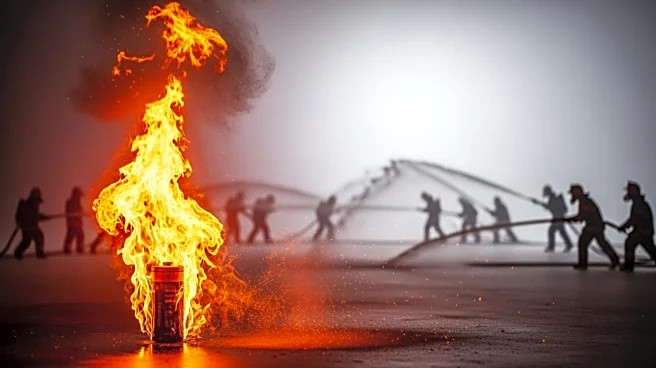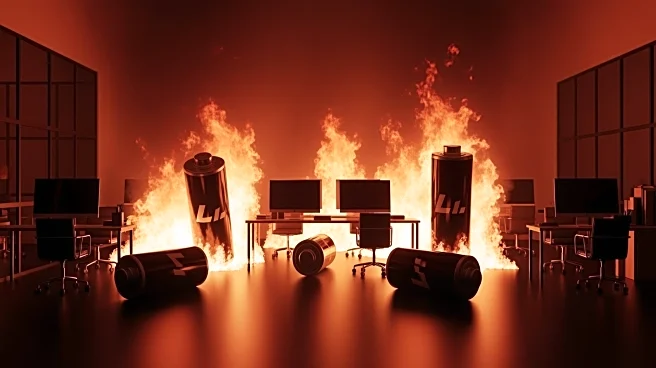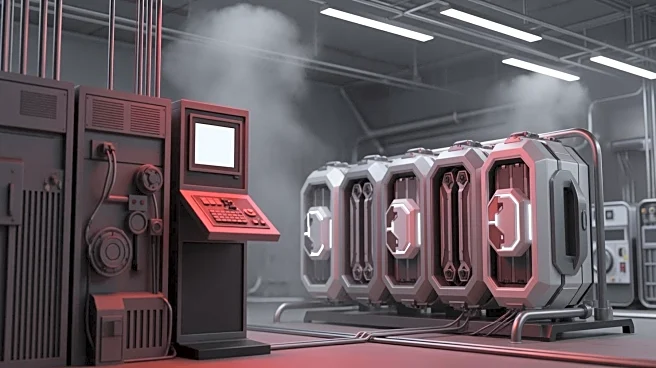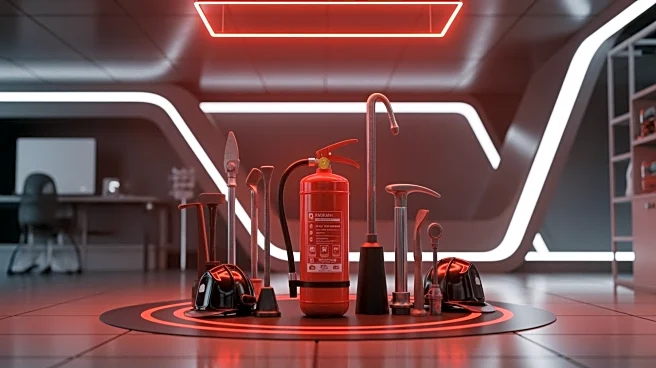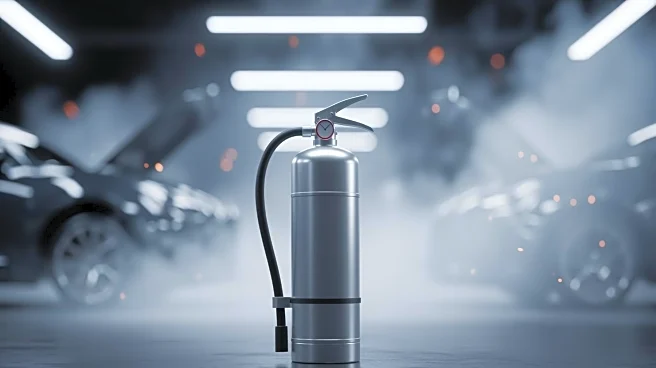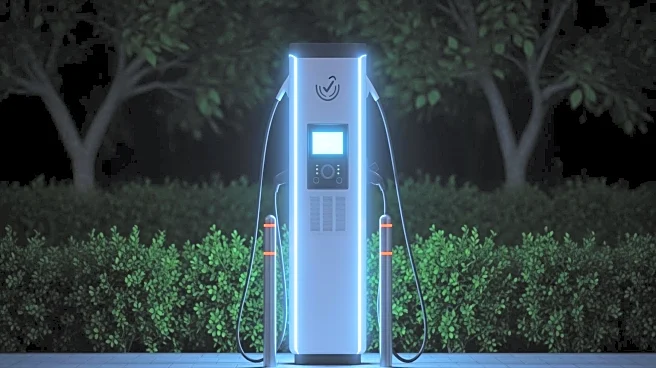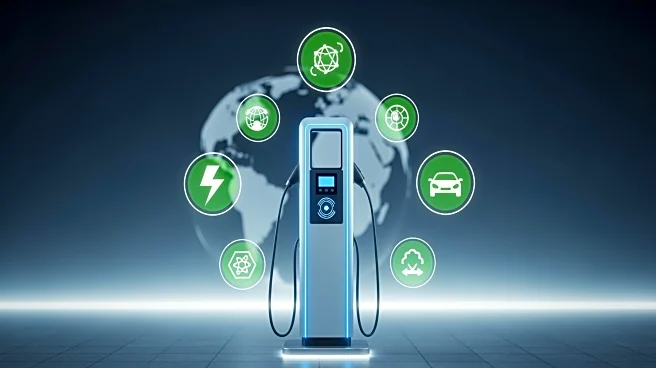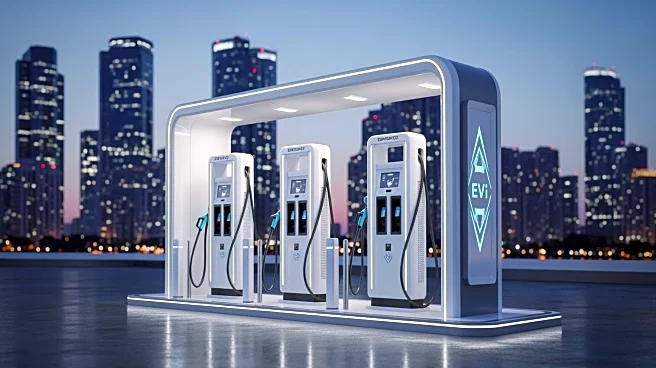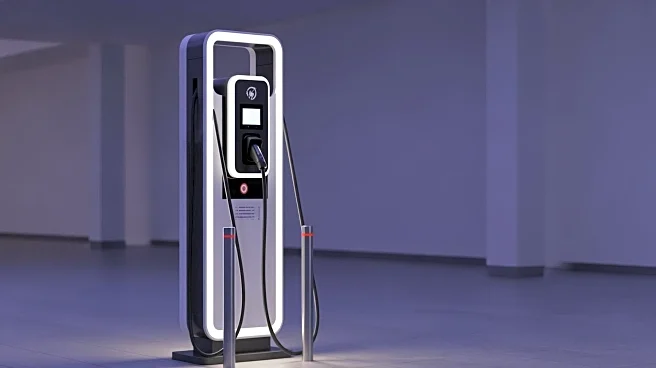What's Happening?
A hazardous fire erupted at General Motors' design studio in Pasadena, involving lithium-ion batteries and prototype cars. The Pasadena Fire Department responded to the incident, which was declared a four-alarm
fire due to the scale and hazardous materials involved. Over 100 firefighters and a hazardous materials team were deployed to tackle the blaze. The fire was challenging to combat as water cannot be used on lithium-ion battery fires, which can cause further chemical reactions. The fire was eventually knocked down, but the cause remains under investigation. A firefighter was trapped during the incident but was safely rescued.
Why It's Important?
This incident highlights the dangers associated with lithium-ion batteries, which are increasingly used in electric vehicles and other technologies. The fire underscores the need for specialized firefighting techniques and equipment to handle such situations safely. It raises concerns about the safety protocols at facilities dealing with advanced automotive technologies and may lead to increased scrutiny and regulatory measures. The event could impact public perception and industry practices regarding the safety of lithium-ion batteries.
What's Next?
Fire crews will continue to manage the hazardous materials at the site overnight. Investigations into the cause of the fire are ongoing, and it may take several days to determine the exact cause due to the complexity of the materials involved. The incident may prompt General Motors and other stakeholders in the automotive industry to reassess their safety standards and emergency response strategies. There could be increased focus on developing safer battery technologies and improving safety protocols at similar facilities.
Beyond the Headlines
The fire at General Motors' design studio may have broader implications for the automotive industry, particularly in the context of electric vehicle production and safety. As the industry shifts towards sustainable energy solutions, addressing the risks associated with lithium-ion batteries becomes crucial. This incident may drive innovation in battery technology to enhance safety and reduce the likelihood of such fires. It also highlights the importance of training and preparedness for emergency responders dealing with new technological hazards.
